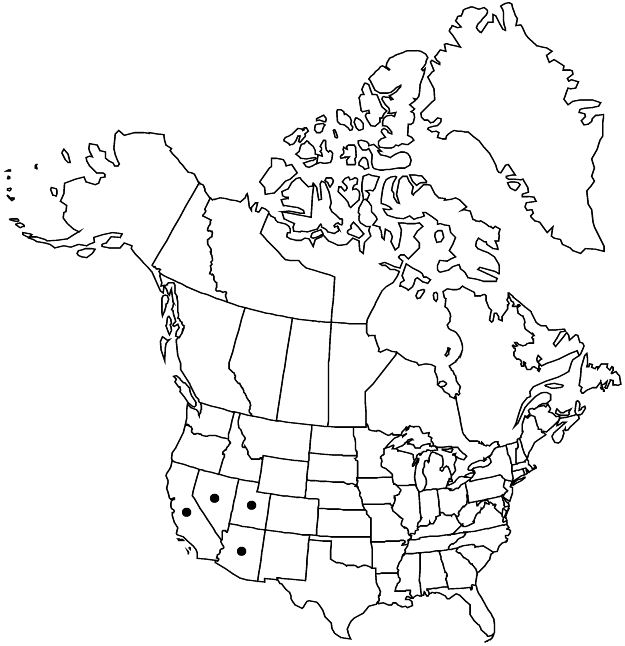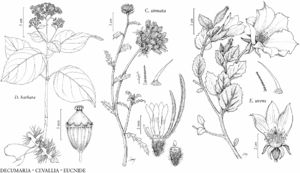Difference between revisions of "Eucnide urens"
Amer. Naturalist 9: 144. 1875.
FNA>Volume Importer |
FNA>Volume Importer |
(No difference)
| |
Revision as of 18:17, 24 September 2019
Subshrubs, moundlike (wider than tall). Leaves: blade usually unlobed, sometimes inconspicuously lobed. Pedicels (fruiting) less than 3 cm, usually curved to nodding. Flowers radially symmetric; corolla funnelform, petals connate 5 mm, 1-colored, white to cream, spatulate, to 45 mm; stamens 50+, inserted at base of corolla, included, most aggregated around style, only longer, outermost stamens spreading away from style, filaments 10–20 mm, longer than anthers. 2n = 42.
Phenology: Flowering Mar–Jul.
Habitat: Clefts in cliffs, rocky slopes, wash margins, limestone, desert scrub.
Elevation: -50–2000 m.
Distribution

Ariz., Calif., Nev., Utah, Mexico (Baja California).
Discussion
Eucnide urens is found primarily in the Mojave Desert but extends into surrounding areas. Asydates inyoensis, soft-wing flower beetles of the family Melyridae, have been found in flowers of E. urens; they collect pollen on dorsal setae and likely serve as pollinators.
Selected References
None.
